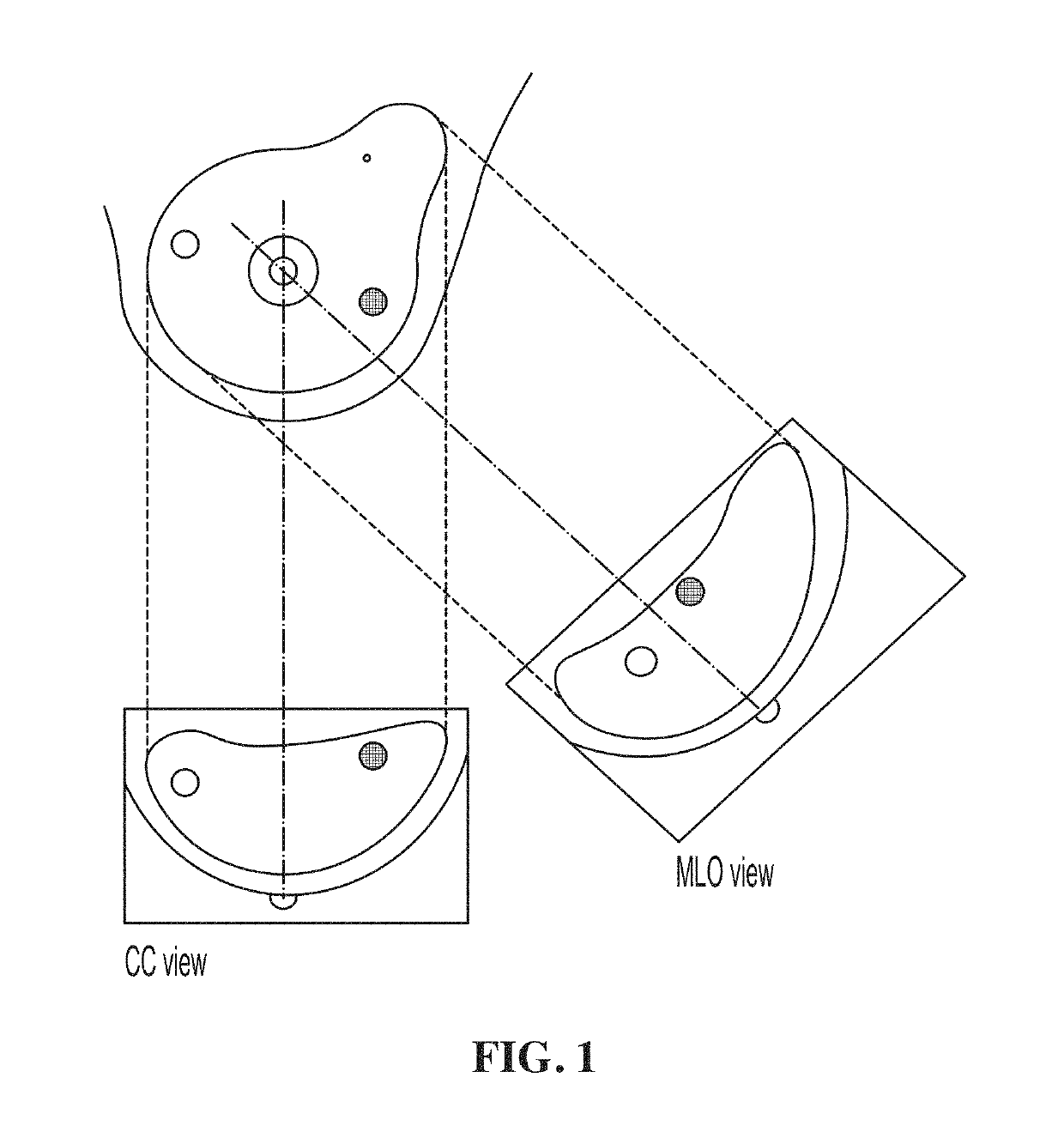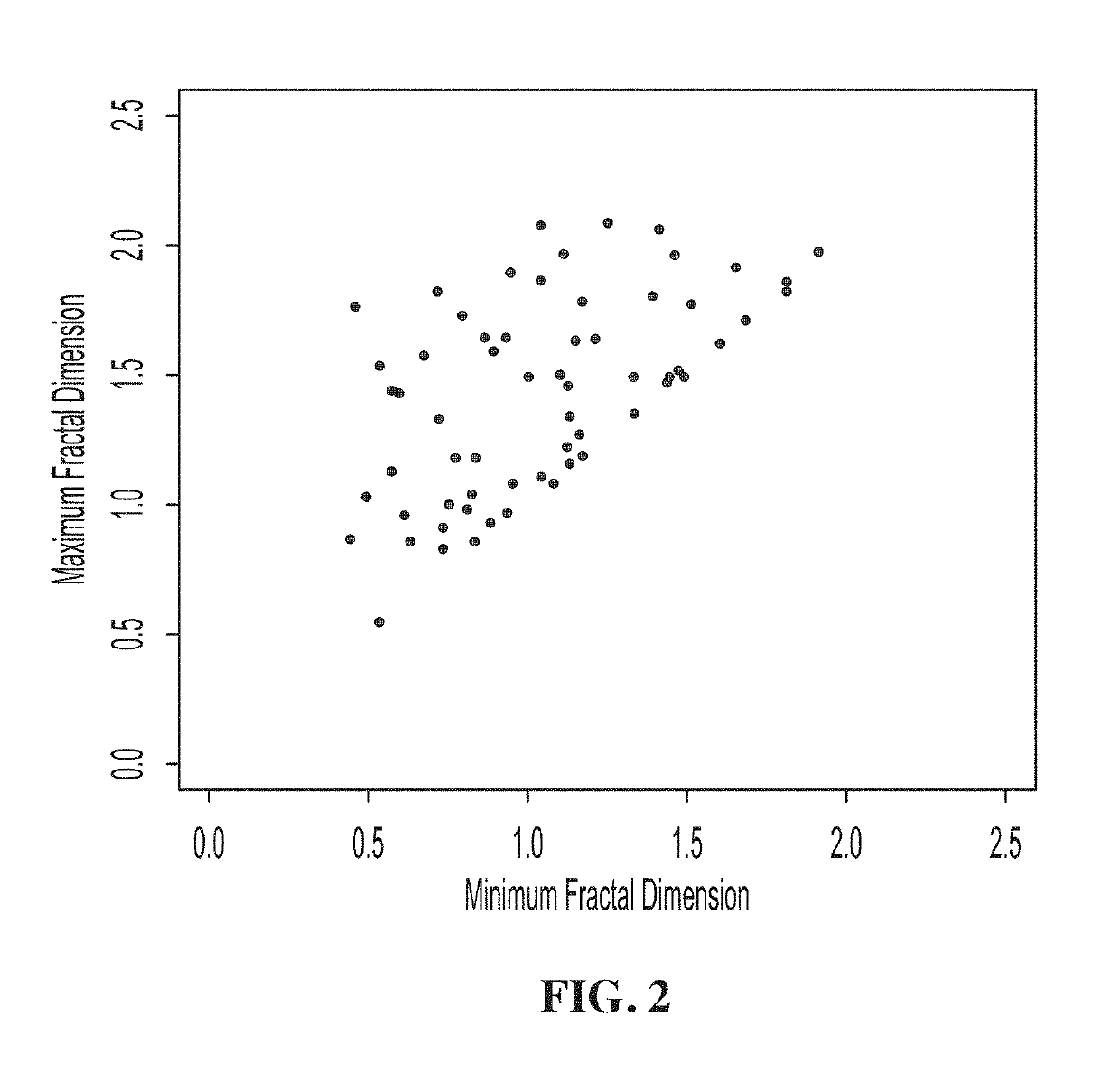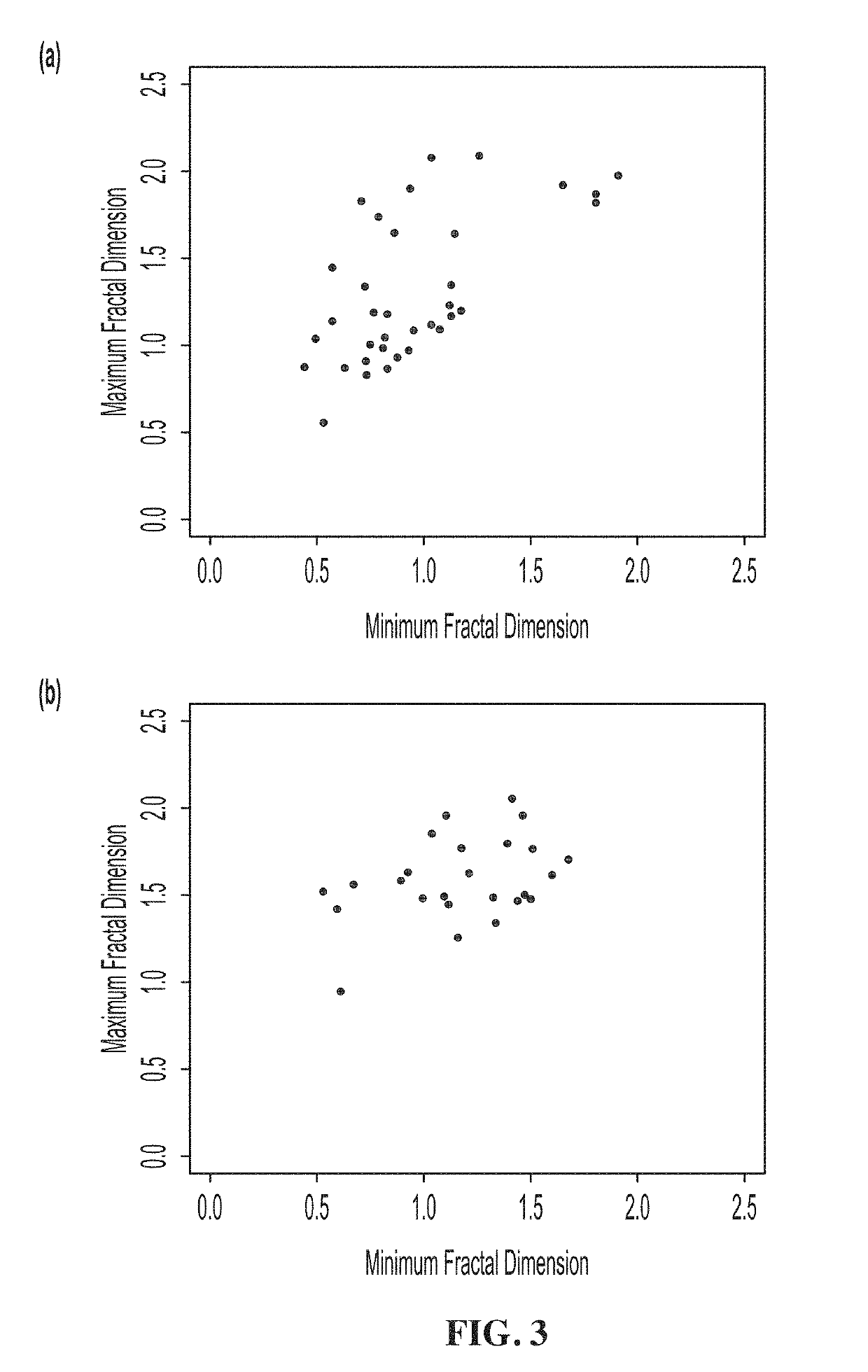Methods of cancer detection
a cancer and detection method technology, applied in the field of cancer detection, to achieve the effect of high-resolution characterization of the morphology of the tissu
- Summary
- Abstract
- Description
- Claims
- Application Information
AI Technical Summary
Benefits of technology
Problems solved by technology
Method used
Image
Examples
example 1
Characterization of Breast Tumor Organization
[0173]This Example shows that the 2D WTMM method has the ability to characterize breast tumors and their microenvironment. Data was obtained from the Digital Database for Screening Mammography (DDSM), described above. Cases having a suspicious region, i.e. containing a benign or malignant tumor, were considered. From these cases, only cases having one set of microcalcifications were kept for further investigation and masses were disregarded for this analysis. Using the methods described above, we were able to fully characterize the lesion by the fractal dimension of the breast tumor and the roughness of the microenvironment given by the Hurst exponent.
[0174]In this Example, a total of 128 images, 78 of which are benign and 50 of which are malignant, were analyzed. Since each mammographic case contains two images, one corresponding to the mediolateral oblique (MLO) view, and the other to the cranio-caudal (CC) view with their projections s...
example 2
Classification of Tumor Prone Tissue
[0177]This example illustrates how provided methods may be used to better understand the mechanisms that drive the differing organization of benign and malignant tumors, and specifically the microenvironment of a radiologist-identified suspicious region.
[0178]To gain a deeper understanding of the behavior and development of breast lesions, neighboring tissue was classified according to the two dimensional WTMM methods described above to survey the microenvironment of the tumors (also see Kestener et al., Wavelet-based multifractal formalism to assist in diagnosis in digitized mammograms, 2001, Image Anal Stereol, 20: 169-174 for an application of this methodology). Briefly, the 2D WTMM method was used to analyze mammary parenchyma. This analysis was used to generate a Hurst exponent (H) as a measure of the roughness of a sample. The Hurst score was used to classify breast tissue as fatty (H=0.25±0.05), dense (H=0.65±0.05).
[0179]To categorize the n...
example 3
Alternative Analysis of Prone Tissue
[0194]As indicated above in Example 2, obtaining one average ΔH value per subject by averaging the calculated |H −0.5| values of neighboring tissue for both the MLO and CC views provided valuable insight that the loss of microenvironmental structure is indicative of the development of tumors, with a higher level of disorder being found in more serious (malignant) tumors.
[0195]In this example, rather than calculating a single average ΔH value per subject (consisting of up to 16 neighbors per image, 8 in each of the MLO and CC views), the distribution of ΔH=|H −0.5| for each of the neighboring regions was taken individually. This methodology provides a significantly larger sample size than the analysis in Example 2 because the sample size becomes the number of subjects x the number of neighboring images around each lesion, for a total of (up to) 16 ΔH=|H −0.5| values per subject. When the data in Example 2 is analyzed using this method, the p-value ...
PUM
 Login to View More
Login to View More Abstract
Description
Claims
Application Information
 Login to View More
Login to View More - R&D
- Intellectual Property
- Life Sciences
- Materials
- Tech Scout
- Unparalleled Data Quality
- Higher Quality Content
- 60% Fewer Hallucinations
Browse by: Latest US Patents, China's latest patents, Technical Efficacy Thesaurus, Application Domain, Technology Topic, Popular Technical Reports.
© 2025 PatSnap. All rights reserved.Legal|Privacy policy|Modern Slavery Act Transparency Statement|Sitemap|About US| Contact US: help@patsnap.com



